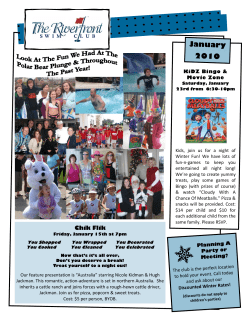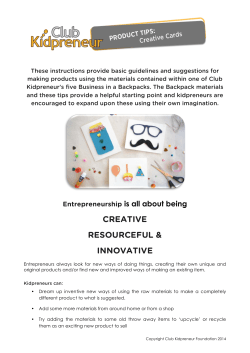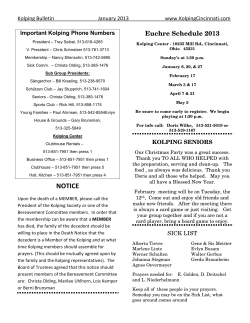
Case No. 12-900 EN S , 2012
Borussia Dortmund – Echte Liebe. 12-900 EN Case No. 12-900 EN SEPTEMBER, 2012 Prof. Dr. Jan-Philipp Büchler and Dr. Erhard Jürke wrote this case. CASEM cases are developed solely as the basis for class discussion. Cases are not intended to serve as endorsements, sources of primary data, or illustrations of effective or ineffective handling of management situations. This case was made possible through the generous cooperation of Borussia Dortmund GmbH & Co. KGaA. Copyright © 2012 casem. FH Dortmund, Emil-Figge-Str. 44, 44227 Dortmund Borussia Dortmund – True Love. How to build a top national football club brand. After publishing the preliminary figures for the fiscal year 2007/08, the management board of Borussia Dortmund had no time to rest. Despite an improved financial performance and a reduction in net debt, the financial room for manoevering for the only publicly listed football club in Germany was still strictly limited. Thomas Treß who had been appointed Chief Financial Officer (CFO) three years before, at a time when the club was experiencing a severe financial crisis, was able to complete the financial restructuring. He was, however, well aware of the fact that the financial performance depended still directly on the league performance of the club. If Borussia Dortmund failed to qualify for an international competition for a 6th time in a row, relevant sales revenues from ticketing, television rights, sponsoring and merchandising would not be available for the turnaround. For the next strategy talks with stakeholders, Thomas Treß planned to discuss possible approaches for reducing the dependency of financial performance on league performance of Borussia Dortmund. In order to prepare this discussion, he commissioned a detailed report on the sources, development, and composition of the sales revenues from his division heads and managers.1 With this he expected to develop a better understanding of the key success factors of Borussia Dortmund. Borussia Dortmund – League Performance Borussia Dortmund finished 13th in the German Federal League(Bundesliga) at the end of the season 2007/08. As a result, the club did not qualify for international competitions, such as UEFA CUP or Champions League. Therefore, additional income primarily generated by TV rights and ticketing from international competitions could not be generated in the next season and the room for manoevering in terms of investments was still very limited. The club management defined a top 5 position in the national league table as a minimum objective for each future season in order to put the club on a sustainable financial basis by participating in international competitions. Tab. 1: League Performance 1999 - 2008 1 See attachment A 1 / A2 Organisational structure of Borussia Dortmund. 1 Borussia Dortmund – Echte Liebe. 12-900 EN Borussia Dortmund – Financial Performance After the initial public offering (IPO) in 1999 the former management board made heavy investments to sign on famous international players to Borussia Dortmund and to extend the existing grounds to become the largest football stadium in Germany. After initial success in national and international competitions contributing to a significant increase in sales revenues, the club missed out on international qualifications in 2003/04 and thus suffered a dramatic decrease in sales revenues and earnings. Within two years the club was unable to finance operating expenses and interest payments. At the climax of its financial crisis in 2004/05, Borussia Dortmund installed a new management board in order to rescue and restructure one of the football clubs with a very rich tradition in Germany. Tab. 2: Financial Performance 1999 - 2008 Sponsoring: This main pillar of revenue generation contributed 31.5% to sales revenues. As the sponsors have an essential impact on revenues, the club management looked for strategic sponsors and partners in order to establish a long-term relationship that would lead to long-term financial stability. 2 Borussia Dortmund – Echte Liebe. 12-900 EN partnerships with SPARDA-BANK WEST and AWD were continued on a mid-term basis. The regional champion partner WARSTEINER was exchanged for a long-term contract with Brinkhoffs No. 1. The exclusive contract with supplier NIKE would expire at the end of season 2008/09. Ticketing: In the season 2007/08 the sales revenues rose to a total of € 22.6m (+€ 4.3m vs. PY) thanks to additional matches because the team qualified for the final round of the DFB-Cup (+€ 3.9m) and because of several friendly matches. These additional sales revenues compensated for the negative development from ticketing in the Bundesliga (-€ 0.2m vs. PY). In the season 2007/08 the club registered another decrease in spectators. Though Borussia Dortmund still reported the highest number of spectators compared to an average attendance 41,802 in the German Bundesliga, the capacity utilization in the biggest football arena in Germany decreased to an all-time-low of 88%. Fig. 2 Merchandising 2008 Fans: For a long time, Borussia Dortmund had been perceived as “likeable second“ among the football clubs in the national football league by supporters as well as interested parties. Borussia Dortmund was one of the most famous football clubs with supporters all over Germany. In 2004, right before the financial crisis, about 20 mill. people in Germany found the club likeable, with 63% of fans from all over Germany.2 In terms of this national basis, Borussia Dortmund stood out from most of the Bundesliga clubs, which only had local or regional fans (see Tab. 4 Fanbase). 2 Source: Sportive (2004): Football Case Study / European Football 2004, Sport+Markt AG, Köln. 3 Borussia Dortmund – Echte Liebe. 12-900 EN In the season 2004/05 Borussia Dortmund lost sympathy among all groups of supporters and suffered a loss of image due to the financial crisis. Supporters and fans dissociated themselves from the club and their protagonists eventually. They accused the managers and players of being arrogant, megalomanic and detached from the club values. It was the first time in history that a club polarized that many football fans in Germany. As a result, Borussia Dortmund lost fascination value and sympathy and last but not least about 30% of its national fans. In addition, the club also suffered a decline in the strength of its emotional image among supporters in the Ruhr-Region. Thomas Treß reflected on the expectations and interests of the stakeholders of Borussia Dortmund: While followers in the Ruhr-Region could be targeted with honest and authentic communication because of their emotional relationship based on brand heritage, attractive new sponsors and investors would base their support on clear facts and figures regarding the perception and reputaion of the brand Borussia Dortmund on a regional and national level.3 3 See attachment A 4 for brand coverage of German Bundesliga clubs. 4 Borussia Dortmund – Echte Liebe. 12-900 EN Furthermore, a number of different claims have been used in the club´s communication since 1999, such as “Wir sind Schwarz-gelb” (“We are the black-and-yellow team”), a reference to the existing club colors since 1919 or “Mein Verein. Meine Stadt” (“My club. My city.”) and “ Unser ganzes Leben. Unser ganzer Stolz” (“Our live. Our pride”). Here, the claims vary depending on the communication channel and target group but with a strong regional focus. Regional supporters celebrate the socalled “Ruhr mentality” and the traditional positioning as a working man’s club, which is rooted in a deep sense of community and striving for solidarity. Borussia Dortmund´s fans associate these values with their club and appreciate particularly the close relations to the club and the players. They see themselves in the truest sense as a 12th player and part of the team and present this in a unique way. The largest standing terrace in Europe, which the fans call affectionately the “Yellow Wall”, is the epitome of fan culture and pure passion creating an atmosphere in the Signal Iduna Park (stadium), which is perceived as an intensive football experience by all spectators and even TV-viewers.4 Transfer revenues: The team was almost completely rebuilt after the financial crisis in 2004/05 and transfer revenues decreased significantly. Sports director Michael Zorc made the best of a difficult situation and systematically promoted and developed local youngsters. The result was a young and talented team with real passion, ambition and identification with the club because of the local roots. It's a team that is built on its internal strength and mutual understanding, concentrating on shared experience and qualities. From a players’ perspective, Jürgen Klopp (head coach) is a real and authentic motivator of the team. They describe him as “real and emotional, straight, sincere and also extremely hungry for success”. Preparing the Strategy Talks Thomas Treß looked at the agenda of the strategy talks with the board of directors. He would have to prepare and deliver presentations for the agenda items “Financial Performance of Borussia Dortmund” and “Brand Positioning (national / international)”. A reasonable beginning seemed to be a detailed situation analysis of Borussia Dortmund with regard to the drivers of financial and league performance. A discussion with his board of directors would probably circle around potential levers for uncoupling financial and league performance. He wondered which key success factors and levers would be most relevant to boost revenue sales independent of Borussia Dortmund’s positioning in the league table. How could he make use of the traditional fan basis in order to increase brand awareness and attraction beyond the Ruhr-Region? What brand positioning of Borussia Dortmund would be acceptable for the regional fan basis and attractive for national fans and sponsors? How could he ensure that no stakeholder would be left behind? 4 See attachment A 5 for stadium atmosphere and A 6 for a communication channel overview. 5 Borussia Dortmund – Echte Liebe. 12-900 EN Appendix A 1: Organizational structure Borussia Dortmund Group (2008) Source: Borussia Dortmund GmbH & Co. KGaA, Annual Report 2007/08 6 Borussia Dortmund – Echte Liebe. 12-900 EN Appendix A 3: Merchandising: Football shirts 2004 – 2008 Source: Borussia Dortmund GmbH & Co. KGaA A 4: Brand coverage of German Bundesliga clubs Source: KIND (2008): Spitzenfußball als Markenprodukt. 7 Borussia Dortmund – Echte Liebe. 12-900 EN Appendix A 5: Stadium atmosphere: Grandstand (“YELLOW WALL”) Source: Advertisement Frankfurter Allgemeine Zeitung A 6: Branding and communication channels Source: Borussia Dortmund GmbH & Co. KGaA 8
© Copyright 2025












